 Madeleine Lumley.
Madeleine Lumley.
I have recently graduated from Loughborough University, having studied (BA) Industrial Design and Technology with a 2:1 grade.
I am currently seeking a full-time position starting September 2023.
I‘m a team player, love to think up ideas and most importantly, I am a passionate designer who is actively seeking to improve and learn whilst making the world (hopefully) a better place.

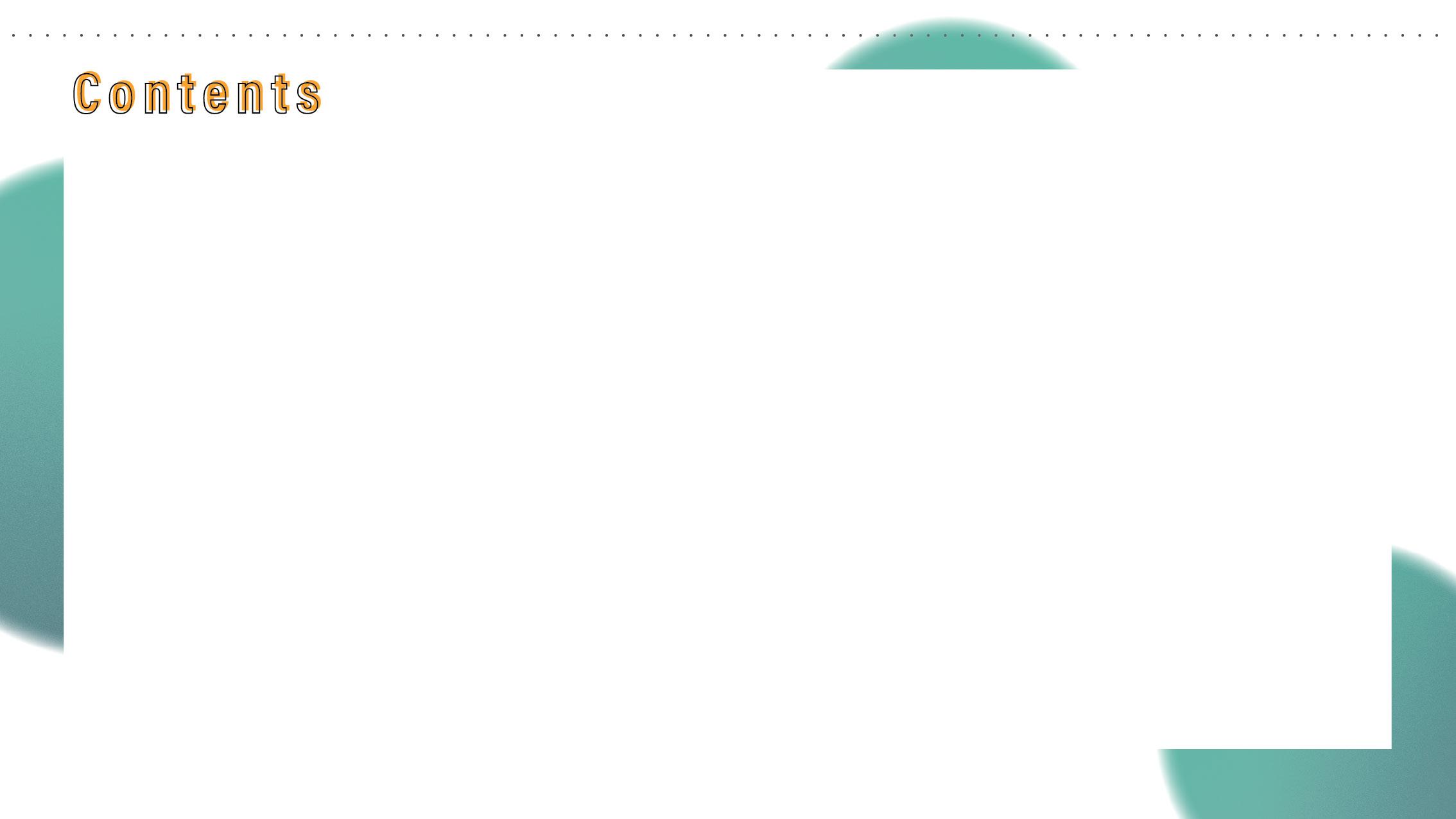




02. 03. 01 04
Final Year Project

8 Months
Project Title: A Modern Approach To Making Your Own Sustainable Oil Paints With An Emphasis On A More Desirable Process

Skills learnt: Primary Research, User Testing, Sketching, Brand Development, Model Making, Rendering







01.
The Problem.
Initial Findings




Artists who are wanting to create their own oil paints from scratch are faced with outdated methods of work. With continuous exposure to highly toxic fumes from the pigments and cleaning equipment, artists can develop life long respiratory health issues due to this prolonged exposure. With little education and awareness in this field, can a product enable artists to modernise the principles of making oil paints from scratch whilst also keeping them safe in the process?

90%



would be interested to see change in art materials to address plastic waste.
22% of university artists have attempted to make their own paints from scratch. Many more are willing to try but don’t know how.





74%
of university artists who haven’t tried making their own oil paints would be willing to give it a go (with guidance).

“ “
Creating Oil Paints from scratch takes far too long and is a painful process. I wouldn't even know how to replicate the paints... - Lucy
Product Development.




Prototyping Development.



As well as coming up with a designed product that would work well with artists and be relevant in art workshop spaces, I also needed to better understand the interiors of the product and how it would work. I therefore bought a cheap kitchen mixer to understand what were the most important gears, how it worked and what needed to change in the design elements.


In conclusion, I found that it was not repairable, hard to pull apart, and also attaching and detaching the bowl looked and felt like it would easily break. Also tested making oil paints with a few different tools, seeing what worked best and what surfaces to avoid.
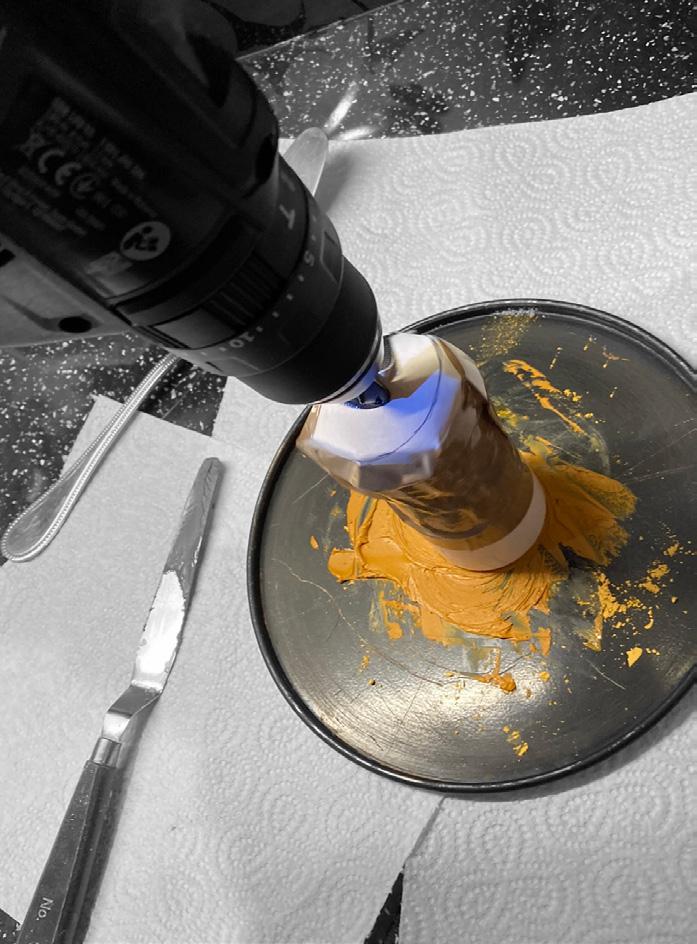


User Testing & Feedback.
After some initial user feedback for the UX prototype, I updated the pages and ensured the user interface were all connected and ready for testing through Figma.


I wanted to see how easy it was to follow the step-by-step process on the control panel whilst also using a cardboard model to see if there were any touchpoints that needed developing further.





Overall very positive feedback, some tweaks were needed in regards to the control panel however all participants were able to sucessfully create oil paiint from scratch as instructed.

Aesthetic Development.






Creating different moodboard for inspiration enabled me to quickly come up with CMF and narrowing the design and looks of the product. After some trial and error, I then gained a lot of inspiration from retro car designs. I felt this was appropriate to design a product with a timeless style and more appropriate to other old and vintage tools you would see in an artists’ workshop.
























User Scenario.
Press the power button to turn on the mixer and the control panel. The air purifier will automatically turn on.
Follow the instructions on the control panel, add the pigment and linseed oil. The control panel will allow you to measure the amounts of each ingredients used to refer back to later.
Mix the pigment & linseed oil with a palette knife to obtain a rough paste. This paste will become finer once it gets grounded with the muller.
Key
Pull down the lever and press start and Motra Tools mixer does the rest! The machine will mix at 15 minute intervals to ensure the artist can regularly check when their paint is ready.
When the mixer is done, the artist can easily unclip the plate off to collect the paint or can finish off the process with a hand- held muller.
All information on ratios and ingredient amounts are stored in the ‘Saved Paints’ section to refer and replicate in the future. The artist can also edit the information if required.

Easy-to-use control panel










Easily attach/detach muller and plate
Automatic air purifier
Built-in scales for measuring pigment amount
Features 1. 2. 3. 4. 5. 6.
Brand Development & Brand Guidelines.



When designing the logo for Motra Tools, I wanted the logo to stand out, be in-line with competitors brands as well as quickly show what the industry there products are positioned for. I therefore added the some traditional artists’ palette knives and a muller to add a sense for traditionalism in the brand whilst making it more modern with San-Serif fonts. I created a whole brand guidelines booklet once I determined the logo and palette colour. (As well as brand language and positioning).


Brand Proposal.

Branding was a huge part of my project. As this being one of my stronger skills, I therefore wanted to ensure that Motra Tools branding would work in the products environment. All possible touchpoints were considered, including a website where this product would predominantly be sold.



I wanted the brand to be bold, different but still seen as a serious tool that artists can see worthwhile in their studio workshop as part of their specialist tools.

Product Proposal.


Motra Tools enable artists to create oil paints from scratch with a combination of natural pigments and linseed oil. This tool modernises a technique that has been around for hundreds of years. With the use of the control panel, the artist has full control to learn how and create high quality oil paints from scratch.

Personal School Project
1 Week
Brief: Propose a physical product that a brand could launch to enrich lives and aid the cost of living crisis.



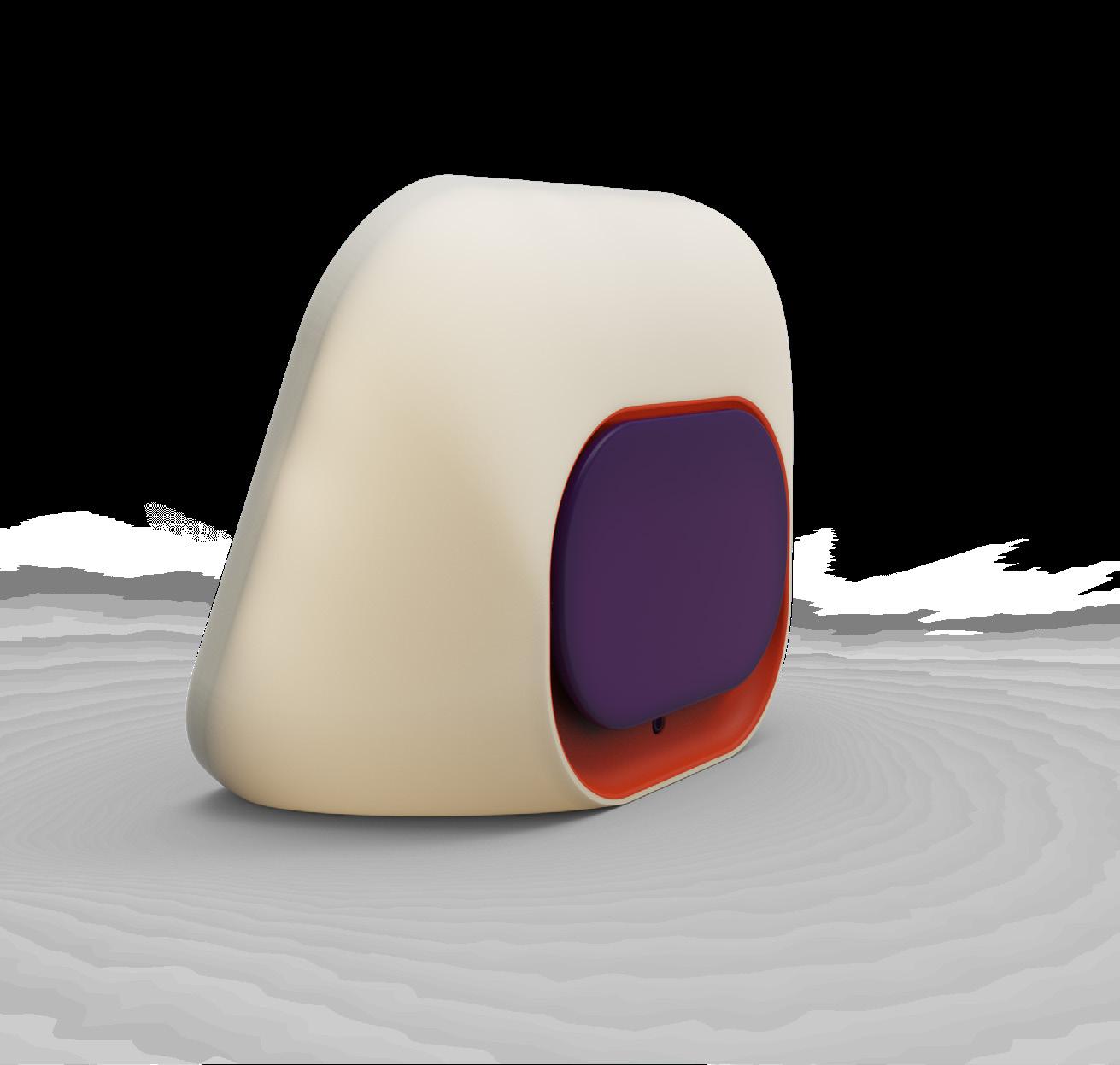




Live brief by:
Skills learnt: Secondary Research, UX Development, Brand Dissection

02
The Rising Cost Of Energy Bills

With around three in four adults reported feeling worried about the cost of living crisis and with electricity prices at an all time high, how can we help families reduce electricity consumption in a sustainable way?
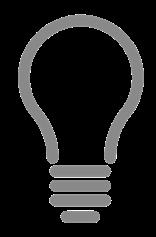

of renters find it difficult to afford their energy bills.
Around three in four adults (77%) reported feeling very or somewhat worried about the rising costs of living.


of people with smart meters are more conscious of their energy use.




Smart meters can cause anxiety especially during the winter months when electricity consumption and price go up.









1. Caleb Ogwuru, L.F. (2022) Impact of increased cost of living on adults across Great Britain: June to September 2022, Impact of increased cost of living on adults across Great Britain - Office for National Statistics. Office for National Statistics.
1 60% 77%
2 2. Fuel stress set to soar from April to impact one in four older households and four in five of the poorest and it could get worse in October (no date) Age UK.
68% 3. Smart Energy Outlook September 2019, 9,576 interviewed 3 4 4. Smart meter anxiety (no date) Gransnet. Available at: https://www.gransnet.com/forums/house-and-home/1311208-Smart-Meter-Anxiety (Accessed: February 10, 2023).
I couldn't think of anything else... I was worried about how much energy was being used, I stopped using the oven, of course, I haven't put the heating on. - Natasha
“ “
Product Development.







Scenario.
1. Delivery


Eon Next posts their Smart Hub to their customers, to help those who want to reduce their electricity usage.

4. Step-By-Step Process

Walk-through asking how many live in the household, how many rooms and what electrical appliances are located in each of the rooms. The user would do this inventory whilst walking around the house (if required).


7. Personalised Plan
The user can then find a personalised plan on ways to reduce electricity consumption based on their habits.
2. Connect

Smart Hub firstly connects to the smart meter that is already installed.



5. Data Collection
Over several weeks, the Smart Hub collects data from the smart meter to understand spikes in electricity usage and calculates electricity consumption of each appliance in the home.

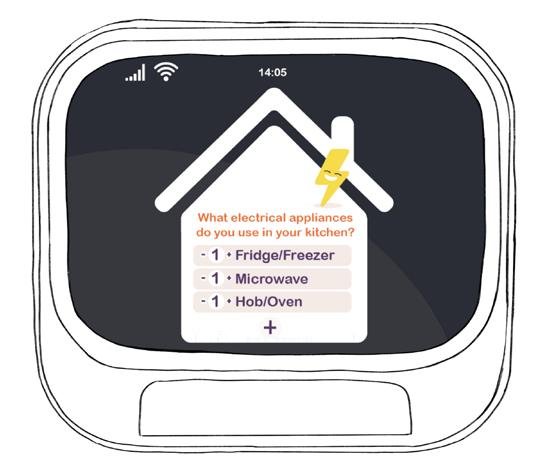
3. Set Up
The user in the household sets up the Smart Hub to be tailored for their household and home habits.

6. Electrical Consumption
When the hub is ready, it will be able to show how much electricity is being used in each room of the house and each appliance.
8. Return To E.O.Next
After several months, the user would have adopted some habits to help them reduce their energy consumption for the longrun. The Smart Hub will then be collected back from E.ON Next for cleaning and a factory reset, before being sent out to the next household.
Product Proposal.

Eon Nexts' Smart Hub is an AI formulated device that creates and optimises a personalised energy efficiency plan for households. Provided for free by E.ON (just like smart meters).


Group School Project 8
Weeks
Brief: Tomorrow’s Menu

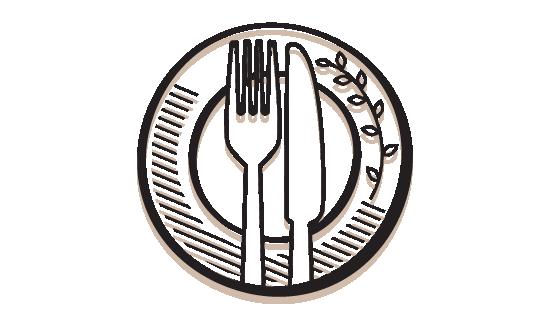
How might we promote new relationships to food that are more secure, regenerative and culturally appropriate?

Live brief by:

Skills learnt: Primary Research, App Development, Branding, Project Management




03.
The Problem.
Initial Findings
A growing number of adults are trying to eat more sustainably, but struggle because of the lack of information available on the foods environmental impact, location and availability in stores. How can we better inform their food choices to be more sustainable and convenient in their time-starved lifestyle?





73%

of millennials are willing to pay more for sustainable and environmentally friendly products.
48% of grocery buyers say a lack of product knowledge is the biggest obstacle to changing to a more sustainable diet.





75%
of adults in great britain say they are worried about the impact of climate change.

Sometimes it's unclear where organic produce come from and whether they are actually truly sustainable or not. - Jill
“ “
Digging Deeper. Primary Research



We gained our insights through questionnaires to different user groups. We also provided many sections for feedback within the questionnaire, to better under the users’ feelings with the current issues around shopping sustainably, current habits and concerns.







Our Research Methods
Opportunities
62%

of consumers think it’s not easy to finding environmentally friendly food.
84%
of consumers believe their decisions make an impact.
60%
are moving towards smaller, more frequent shops.
Increase the efficiency of grocery shopping experience.





Make sustainable foods more accessible for those with busy schedules.
Educate and promote future foods eg seaweed.
Provide transparency and nutritional understanding of current foods.





Branding Development.




Tray Design & Development.

After sketches and lots of iterations, we developed a food tray with multiple screen designs. This included screens that clipped to the tray, embedded screens and utilzing the users’ mobile phone as an option. Through further experience prototyping, it became apparent that users did not prefer the embedded screens into the tray.





We then went back to the drawing board and came up with two final tray prototypes based on previous feedback. We found all participants prefered the comfort of the handle design and also the removable interactive screen.

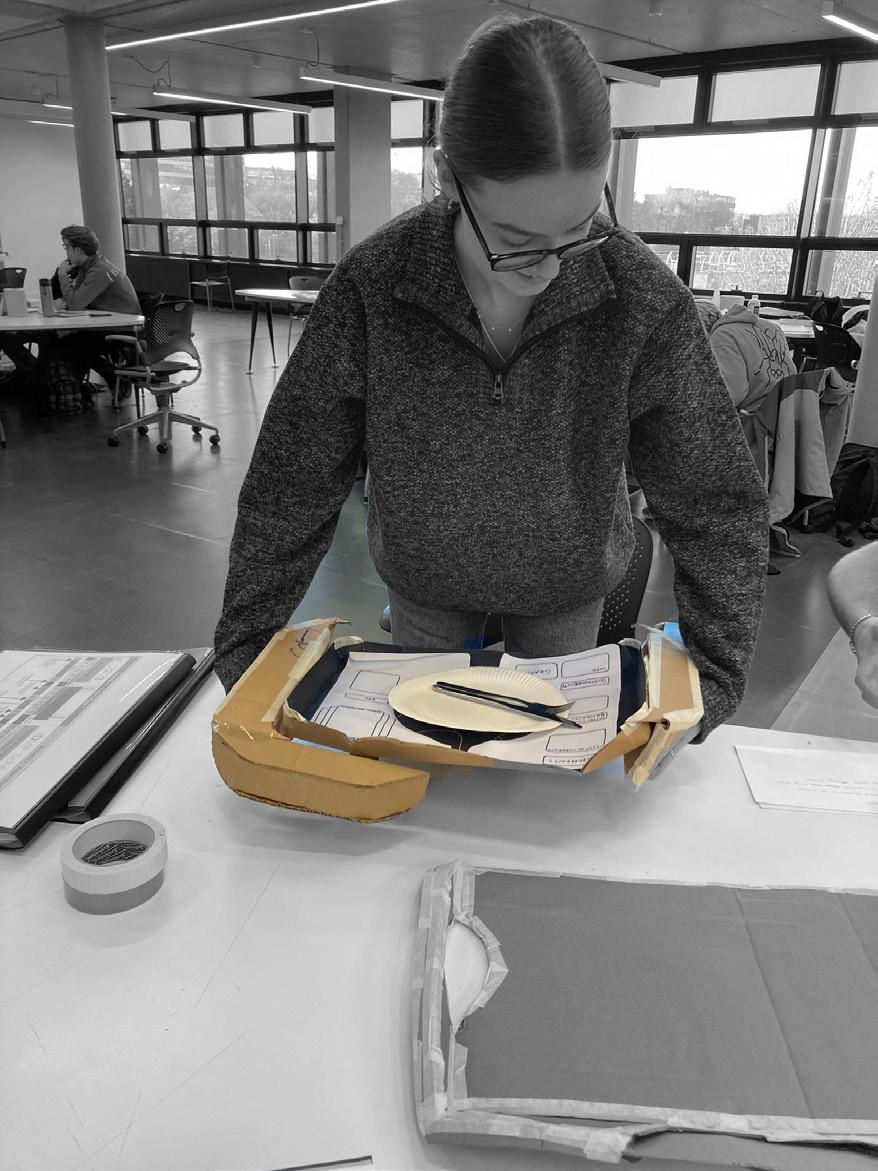 Sketches by team member
Sketches by team member
App Design & Development.



After wireframing different iterations of the design, we proceeded to develop the ‘Future Foods’ app in Figma. This was to present healthy, sustainable meals with a twist; helping users to be more sustainable with their shopping habits.

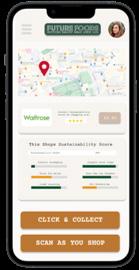







This process started with creating a userflow diagram, followed by wireframing and then moving onto an app prototype created on Figma (for user testing).


App Design User Testing.


We tested our prototype app on five different users to understand what needed to change. The main problems included the app looking too ‘clunky’, with the colour choices and text making it difficult to read and navigate. The app needed to be more transparent and clear with what was happening as some users found the navigation confusing. Although, as a whole, the app was highly reviewed, it needed updating to make it more user friendly.






Design Design Test Test Develop Develop
Future Foods Proposal.
To create a dining experience around future foods, using interactive trays which educate working millenials about sustainable meals and the ingredients used. The information on the tray encourages people to use the app that helps users shop an eco-friendler diet in order to change societal habits around unsustainable food consumption.





Sustainable Design
Live Brief by Array Marketing/ Willson & Brown




6 Weeks
Brief: There is a lot of single-use plastic waste in the fast fashion makeup industry, especially in the Point-Of-Sale Units. How can we address this problem to make the industry more sustainable?

Skills learnt: Sustainable design analysis tools, Primary Research, Materials

04.
Current Design Issues.

Current makeup stands, fascias and cassettes and key issues that need addressing.
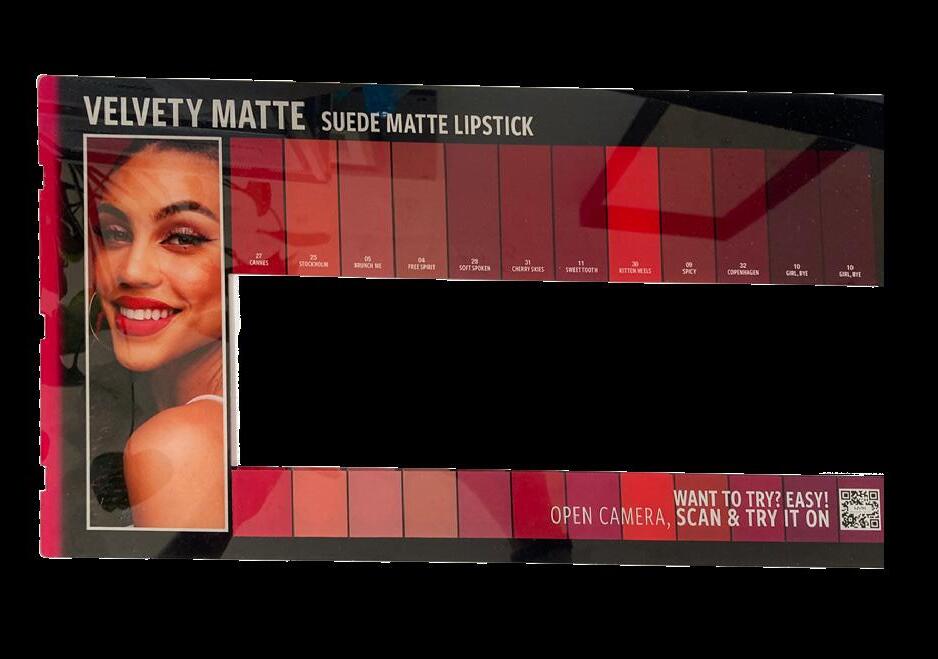


Fascias: Made with acrylic and graphics stuck directly onto this. This makes the material impossible to recycle and reuse and therefore goes straight to landfill. These get changed regularly; anytime there is a product launch, change of products or change of campaign.

Cassettes: Made with HIPs (High Impact Polystyrene) plastic. These come either in transparent or black. Transparent HIPs uses a lot more virgin plastic due to discolouration and a ‘yellow’ tint seen when using recycled plastic which makes the presentation undesirable. Black plastic can be used with a much higher percentage of recycled content due to dye being added.
Problem: Created as whole plastic units. These molded plastic cassettes only have the spring and the white back which is separable. This means that in transportation, a lot of space is wasted. These cassettes can’t be repaired or reused if broken and alot of made for precise measurements for each makeup unit.

Metal spring in the cassette- A pain to separate and change for merchandisers or store workers. Makes it less desirable to fix the cassette than install a new one.
Low recycling rate of cassettes in stores where merchandisers are not being usedStores that don’t pay for merchandisers to install shelving units depend on store staff (that may not have the time or have appropriate training). These have a tendancy to either not know what materials can be collected for recycling or what items needs to be disposed of correctly.
Makeup Shelf (with makeup). Makeup Shelf (In context with the fascias attached infront of the cassettes.)
Fascias (Graphics and information about the makeup). Cassettes (Holds items of makeup and pushes these items to the front).
Fascias Design Proposal.



Fascias - The outer graphics that hide the shelving.
Key updates:
Fascias are now made from two materials. A top layer made from transparent acrylic (to add a shine finish) and a second layer of Foamex with all the graphics printed.
Graphics held together with a pin.
Fascia can be separated for appropriate reuse or recycling. (Due to clean, uncontaminated materials).
Foamex made from PVC foam can readily be recycled in commercial recycling centres (same as uncontaminated acrylics).
Updated fascias made with two separable materials. Foamex and Acrylic. Held together with a removeable pin.
Snap corner canvas to clip and hold the fascias.
Cassettes Design Proposal.

Cassettes - The inner shelving that hold the makeup.
Key updates:
Updated cassettes designed to be assembled together and separated into different parts for updates or end of life.
Cassettes assembled in the factory, ensuring that merchandisers don’t spend longer instore assembling the shelves together.

Removeable parts of the cassette is primarily designed for end of life to separate each material for appropriate recycling.
Enables the parts to take less space in transportation back to Poland for recycling.
Other variations of cassettes feature similar assembly and design for ease of use and continuity.
Black HIPs plastic on the front and back of the cassette for visual continuity and to enable more recycled plastic to be used (black HIPs plastic can be closer to 100% recycled plastic than clear plastic due to the dye added).

Cassette Design Variation.
Key updates:

Removeable front to enable users to easily change metal spring or separate for end of life.

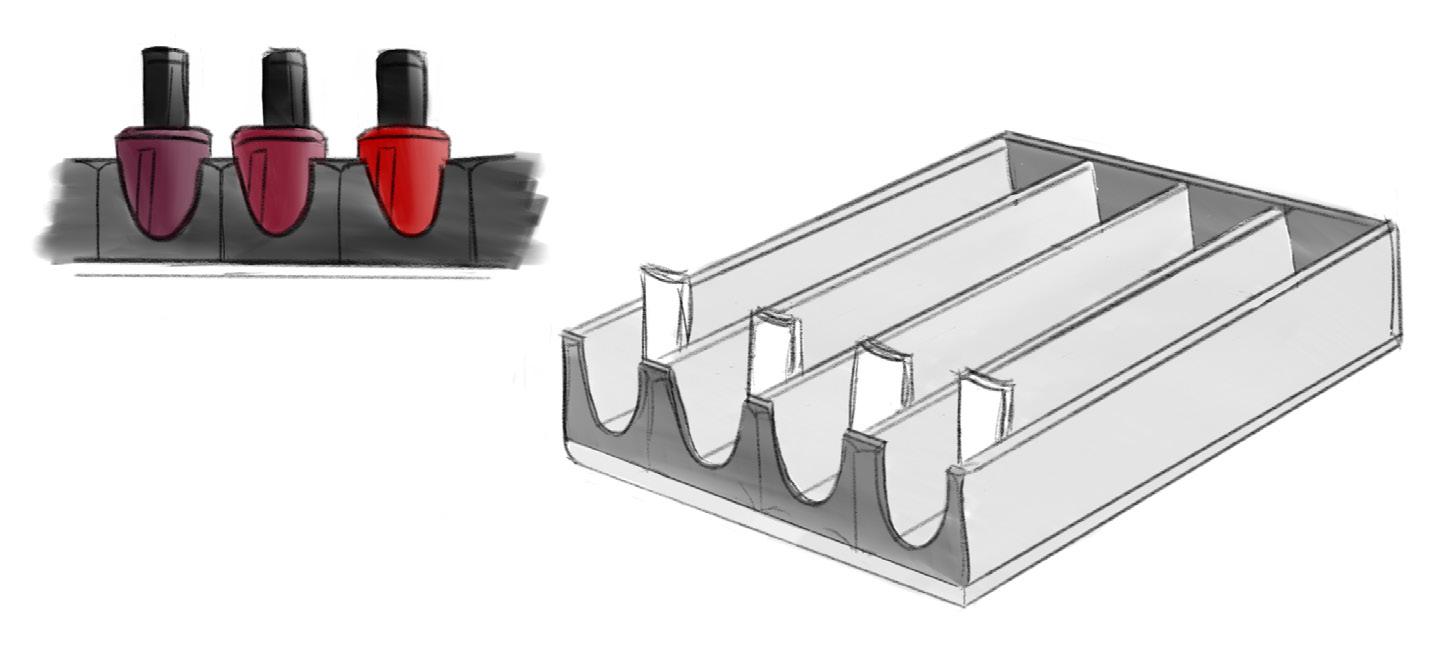



Easy to peel sticker on the back of the cassettes to clearly identify the type of materials used and where to dispose appropriately.
Peel off stickers with information on materials used and recycling reminder.
Once the front cover is removed, you can easily slide in the metal spring or take it out to separate the parts or put back together.
Cassette design for mascara
Cassette design for nail varnish
Cassette design for eyeshadow
Final Proposition.
Why use plastic and not a more sustainable material?
After a couple of meetings with Array Marketing, it seems they have taken several measures through out the supply chain to ensure minimal waste is created when using plastic. Biopolymers would be an ideal replacement however the infrastructure is currently not ready and also the supply of materials are not large enough for the mass volume of cassettes and shelving units created yearly for this industry.
Why L’Oreal?
Array Marketing has informed us that L’oreal have recently been pushing for design changes and have asked for a more sustainable supply chain. They are now assigning more funding towards sustainability in a push to be a leading brand in the world of makeup for sustainability. L’oreal is also the world’s largest cosmetics and beauty company (revenues amounting to about 40 billion U.S dollars) - Statista

Why create cassettes with removeable parts?
Separating materials ensures that the plastic can easily be grinded and regenerated for other parts.
It also enables the items to take up less space in boxes when being transported to recycling centres, ensuring less ‘air’ is being transported.
Enables parts to be replaced if anything breaks, ensuring the cassettes can be used for longer periods of time.
What are the main designs features that currently generate the most waste?

Fascias have been found to be the main issue. Being made from acrylics with graphics that are stuck onto the plastic, this piece of plastic is currently none recyclable and unusable once the design changes (which is every couple of months). The new proposal provides a finished look that is as attractive as current designs, however ensures that the materials are easily separable for reuse or recycling.
Why add the removeable sticker to the back of the cassettes?
It has been found that some store assistances that handle the cassettes dispose of them inappropriately due to (perhaps) lack of information or awareness. This is a reminder of what materials are used and how to dispose of them appropriately. Some merchandisers also find it hard to identify the different types of cassettes for sorting; the sticker makes this information clear.
Personal Projects.

Publishing Natures’ Illustrations during lockdown- During the first covid lockdown, I decided to teach myself how to use Adobe Illustrator and start creating illustrations from nature and insects I was finding near my home. After creating over 40 of these illustrations, I contacted a publishing house to create a colouring book out of these drawings. It was a huge success and ended up being sold on Amazon and Waterstones as well as other retailers.

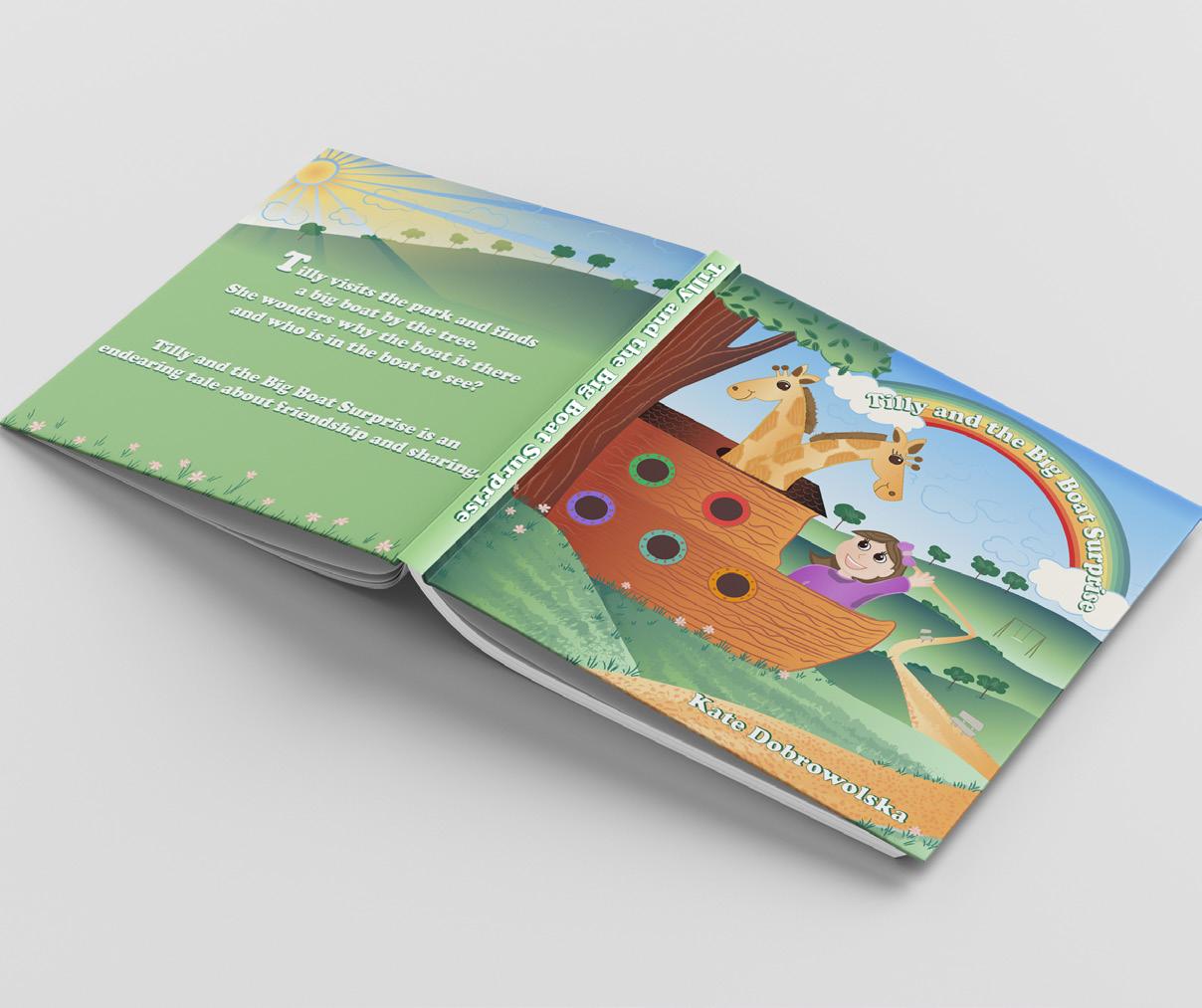
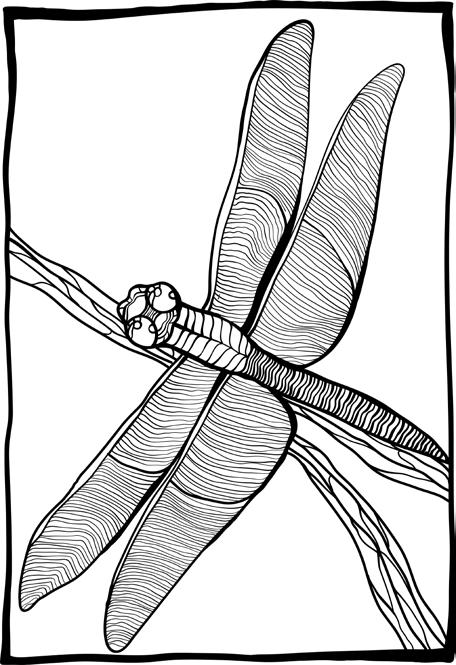


Designing book covers for other authors- Through contacts from the publishing house, I was able to help other authors design their books to be published. This was good experience working with clients and understanding specifically their vision for their stories and creating covers that they were both really pleased with.

CV & Work Experience.

CONTACTS
07842800255
maddyjclumley599@gmail.com
Linkedin.com/Madeleinelumley
EDUCATION
Loughborough University (2018- 2023)
BA Industrial Design and Technology
Grades 2:1
Sir John Deanes College (2015-2017)
A Levels (2017)
Fine Art A*
French B
Biology C
AS Levels (2016)
Chemistry B
WORK EXPERIENCE
Rusty Monkey - Marketing and Design Intern Jan 2022/ Sept 2022
Contacts: Matt Burton, Creative Director matt@rustymonkey.com 0115 950 0842





I was heavily involved in the online marketing strategies of the business as well as working on design and videography projects that were needed internally or external clients. Managing a handful of online marketing accounts for different clients meant I was heavily involved in their longterm marketing strategies through data analysing and problem solving. also created a lot of design assets for marketing requirements with Adobe Suites.
VOLUNTEERING
Soup Kitchen - Project Leader Sept 2020/ June 2021



organised and ran the weekly Soup Kitchen at the local church in Loughborough to feed the homeless or those you are struggling. I recruited volunteers from the university to help cook a two course meal as well as ensured they had a fun and safe evening whilst helping the local community. I also managed the weekly budget for the meals and decided on what menu we can create each week (based on stock levels, donations and price).
ACHIEVEMENTS
Nature’s Illustrations - Publishing my own colouring book Summer 2021
During lockdown and with very little to do, I worked hard on creating and publishing my very own colouring book to help with wellbeing and those in isolation. This book was available on Amazon and Waterstones.
Chartered Institute of Marketing Level 3 - MERIT 2021/2022
I took a year long course on Marketing to learn the foundations of promoting the right product for a client and understanding the basics of the marketing mix.
SOFTWARE

Brown Dog - Social and PR Intern

July 2022/ Dec 2022
Contacts: Lucy Capaldo, Previous PR Executive 077565031835
I maintained social media platforms for several well known interior decorating clients. This involved creating and managing social media marketing campaigns, collaborating with influencers as well as planning monthly studio shoots for PR articles within interior magazines. These articles were often included in Elle Decor, Home & Gardens and Living Etc.
LSU Action - Volunteer Hall Representative
Feb 2018/ Feb 2019
I recruited volunteers as well as took part in weekly volunteering projects organised by the university. The projects are designed to help the local community of Loughborough. These projects varied weekly from teaching kids new skills, gardening and helping the elderly.
Operation Wallacea - South Buton, Indonesia Summer 2017
Adobe Creative Jam - Student App Development

March 2020
Over a week, I quickly learnt how to operate Adobe XD to develop an app with two other coursemates. We developed an app prototype to educate high school students about design and how they can get involved with objects around them to become a more compassionate designer.

HOBBIES
Screwfix - Sales Assistant Oct 2021/ June 2022
Contacts: Joanne Kaye, Store Manager Joanne.Kaye@screwfix.com
07474446625

I fundraised £2,700 for a charitable expedition to Indonesia where I worked alongside scientists in the rainforest. We collected data to help conserve the rainforest and the endemic species within the region to prevent further deforestation.

 Madeleine Lumley.
Madeleine Lumley.


































































































































































 Sketches by team member
Sketches by team member

































































